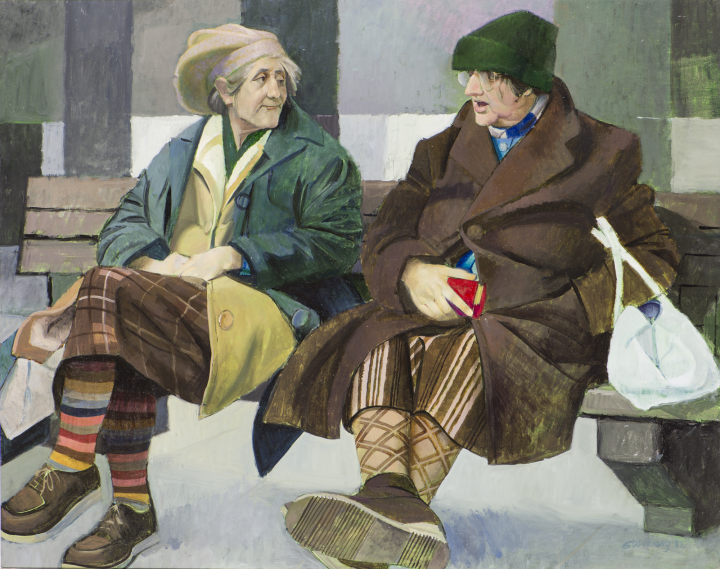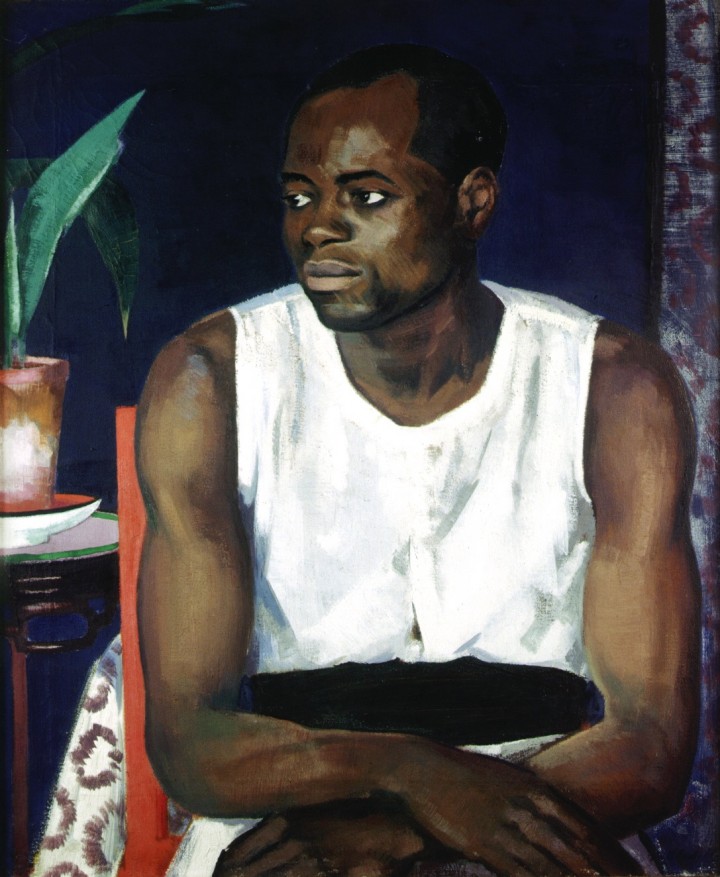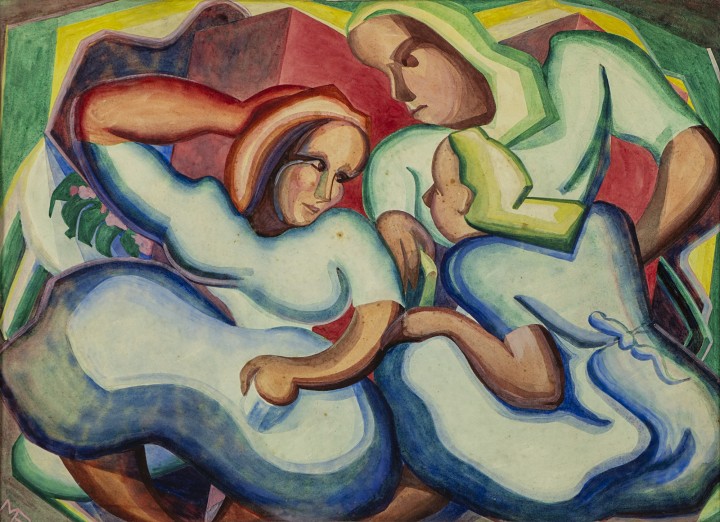Scottish Art News
Latest news
Magazine
News & Press
Publications
Secret City
By Greg Thomas, 09.02.2023

Ron Stenberg’s 1982 painting 'Two Auld Wifies, Dundee' has become a firm favourite amongst visitors to the McManus Art Gallery. The Auckland born artist, who died in 2017, donated the work to the gallery just before the end of his life in recognition of his happy years in the city, where he became Head of Illustration at Duncan of Jordanstone College in 1960. A piece of 19th-century naturalism with kitchen-sink 20th-century subject-matter, it purportedly shows two housewives sitting and gossiping in a bus-stop. The title, with its sentimental approximation of local demotic, secures the truth of the scene as the artist observed it. “I’ve been looking at people all my life,” Stenberg is quoted as saying. “These two characters were sitting there completely oblivious to everyone else. I sketched them a couple of times. They never even saw me.”
After the work was donated to the gallery, however, a different truth came to light. Stenberg’s unwitting subjects were in fact a mother and son, Janet and Alexander. Alexander had profound learning disabilities and the ‘dress’ that the artist saw was in fact the patterned pyjama-suit of the Royal Liff Hospital where he was a long-term resident. The story encapsulates how the seemingly neutral gaze of the artist can be coloured by all kinds of precepts, often so deeply embedded that they seem not to interfere with, but to secure the certainty of their vision.
 Francis Campbell Boileau Cadell, The White Shirt [Jack Manoel Abrew?], c1922, oil on canvas
Francis Campbell Boileau Cadell, The White Shirt [Jack Manoel Abrew?], c1922, oil on canvas
The tale of Janet and Alexander is one of several interesting stories unfolded across a new group exhibition at the McManus Art Gallery, Hidden Histories: Exploring Equality, Diversity and Inclusion in Dundee’s Art Collection. “Museums are widely held to be neutral spaces,” the exhibition text informs us upon entrance. “In fact, they have long been powerful spaces that reinforced the views of a narrow number of voices – traditionally that of a white, male elite....In this, The Year of Scotland’s stories, we have selected artworks that raise the visibility of historically marginalised groups.” It’s a laudable aim – albeit the copy veers at times towards the box-ticking language of a funding application – and the curators have undertaken some exacting and valuable excavation work. We discover, for example, the possible identity of the sitter for F.C.B. Cadell’s luxuriant 1922 portrait 'The White Shirt', a Cape-Verdean seaman and boxer named Jack Abrew. There is also a chance to see some classics by great women painters such as Joan Eardley, and to learn about international artists who have made a home in Scotland, including the larger-than-life expressionist Hock Aun Teh. A wee selection of pieces by untrained or “outsider” artists introduces us to the fevered, weblike mark-making of Scottie Wilson.
At the same time, as the above whistlestop tour might suggest, the curators’ aim of showcasing “equality, diversity, and inclusion” is so expansive in its connotations that each of the individual stories told loses some sense of significance – dignity, even – by being nested in amongst all the others. There is also the danger that, when the narrative thread of an exhibition hangs so explicitly on biographical contingencies, other points of thematic and formal interest (including the constellations of ideas that might emerge if one specific facet of identity were explored in detail) fade into the background. Interpretation can become a matter of parsing surfaces for clues about each artist’s life—and more specifically for clues about their deviation from some spectral norm.
 Amelia ‘Millie’ Frood, Untitled [Waitresses], watercolour © The Estate of the Artist
Amelia ‘Millie’ Frood, Untitled [Waitresses], watercolour © The Estate of the Artist
This is a show with some fascinating sections and great artworks, then, that doesn’t quite hang together as a whole. It’s undeniably true that, as the curators note, “[t]he ability to see your own life reflected in museum collections is important.” It’s also true that taking marginalised artists’ work seriously partly means presenting it as something more than a cipher for the terms of that marginalisation. Nonetheless, in grappling with these two competing facts, the McManus offers us up some buried treasure.
Hidden Histories: Exploring Equality, Diversity and Inclusion in Dundee's art collection is exhibited at The McManus throughout 2023




